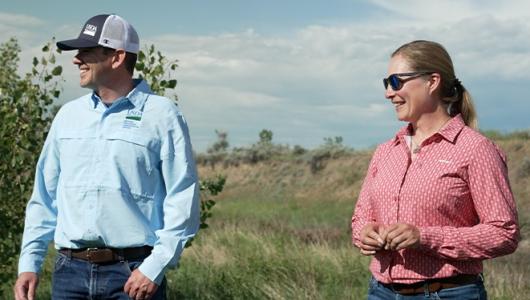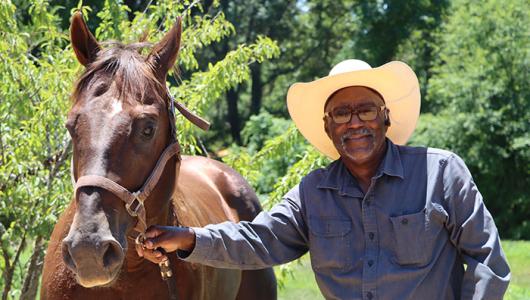Each Friday, meet farmers, producers, and landowners through our #FridaysOnTheFarm stories. Visit local farms, ranches, forests, and resource areas where USDA customers and partners do right and feed everyone.
This Friday meet Karen Washington, an urban farmer in New York City who founded the Garden of Happiness and a community farmers market, La Familia Verde Community Garden Coalition. The garden grows healthy food in an area with limited food access and feeds the soul of the community.
“In New York we have over 500 community gardens, mostly located in low income neighborhoods and neighborhoods of color,” said Karen. “We don’t get paid for this work, its sweat equity. But what we get out of it is community and growing our food and understanding where our food comes from.”
Read the interactive, multimedia version of this #FridaysOnTheFarm story.
Garden of Happiness
When most people think about New York City, they generally don’t envision a verdant farm of diverse crops carefully tended by a community of growers. But that’s exactly what you’ll find at the Garden of Happiness in the Bronx.
“It gives us a chance to practice our traditions, our history, and our culture,” said Karen.
As a New York City native, Karen seems an unlikely farmer, but after founding the Garden of Happiness in the 1980s, she became a nationally recognized leader in the urban farming and food movement.
Karen has been named as one of the 100 Most Influential African Americans by Ebony Magazine and awarded the 2014 James Beard Leadership Award. She is also a founder of Black Urban Growers, and is on the board of the New York Botanical Garden where she works to expand community gardens in the Bronx.
In 2014, she and a group of other women purchased land in rural Orange County, New York, to start Rise and Root Farm. They state, “We came together with a common dream, to continue our food justice work by growing food and community beyond the city boundaries.”
Adding a High Tunnel
The Garden of Happiness recently added a high tunnel, which can be a great benefit to urban farms. Plants grown inside the covered hoop structure are protected from pollutants, pests, and severe weather.
High tunnels allow farmers to plant earlier in the spring and later in the winter, which makes a big difference to communities with limited access to fresh, healthy food.
“We’ll now be able to grow food throughout the seasons, especially for our farmers market,” said Karen.
USDA’s Natural Resources Conservation Service helps farmers integrate high tunnels into their operations. NRCS reimburses farmers up to 75 percent of the high tunnel cost and may also assist with related practices such as composting and drip irrigation.
Growing Healthy Communities
Gardens, like The Garden of Happiness, provide real health impacts to communities. Aleyna Rodriguez-Sanes, who helps at the farm and farmers market, uses fresh, local produce as part of her work at the Mary Mitchell Center for Family and Youth.
Through a partnership Saint Barnabas Hospital, people who have diabetes or are at risk of diabetes receive bags of produce as part of the “Food is Medicine” program.
“The doctors, instead of prescribing medications, prescribe a bag of fresh fruits and vegetables,” Aleyna said. “Inside, we give them a recipe in both English and Spanish.”
La Canasta, the Center’s food access club, also provides participants with weekly bags of fresh produce.
Karen believes that food connects everyone.
“Growing food gives you power. Get out there and make sure you grow food, enjoy these parks, these community gardens are open to the public,” she said. “Go out and see the work that we’re doing to bring back fresh fruits and vegetables to our neighbors.”
More Information
USDA offers a variety of risk management, disaster assistance, loan, and conservation programs to help agricultural producers in the United States. Learn about additional programs.
For more information about USDA programs and services, contact your local USDA service center.
Join the Conversation
Follow the #FridaysOnTheFarm story series and other news you can use on farmers.gov and our social media channels: Twitter, Instagram, YouTube, Flickr, and Facebook.
Story & Photo Credit: Suzanne Pender
USDA Video Credit: Jeremy Call, NRCS


